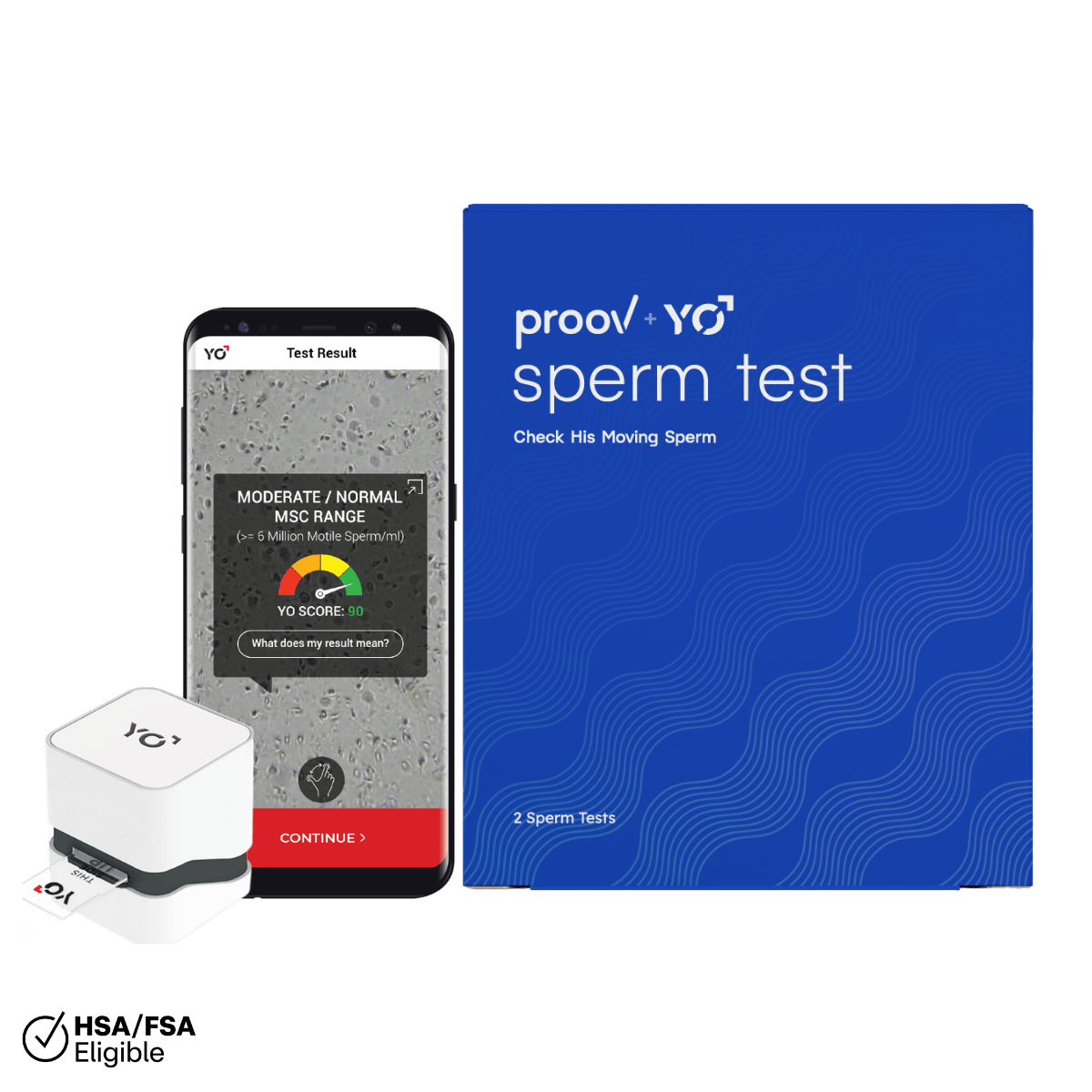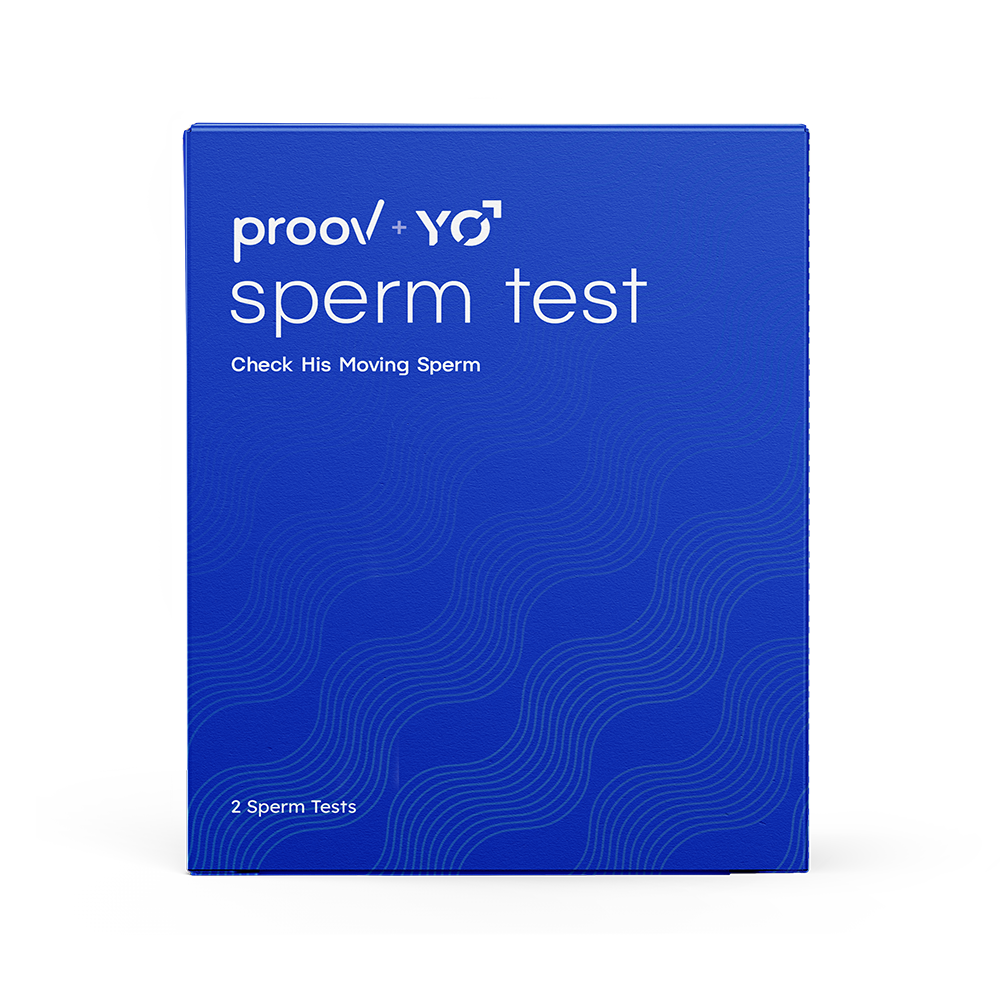Written by: Written by: Dr. Amy Beckley, PhD, Founder and Inventor of the Proov test — the first and only FDA-cleared test to confirm successful ovulation at home.
Written on 8/20/21
It’s no secret that low progesterone levels after ovulation can impact your chances of conception. The good news is that low progesterone is treatable and often requires just a simple fix!
But we never advise in supplementing or treating a hormonal imbalance without testing your hormone levels first. Before they even decide to test their hormone levels, some women may notice symptoms of low progesterone.
Keep reading to learn more about 5 common symptoms of low progesterone so you can recognize the signs of hormone imbalance to test and treat accordingly.
What is progesterone and why is it important?
Progesterone is the dominant hormone during the second half of your cycle, the luteal phase. After an egg is released during ovulation, the empty follicle (also called the corpus luteum) starts producing progesterone.
In order to allow for the best possible chance at implantation and a healthy luteal phase, progesterone needs to stay elevated to a healthy level for several days. This is because its job is to make the uterine lining “sticky” enough to allow for the best possible chance at implantation.
Specifically, progesterone needs to remain elevated during the implantation window which lasts roughly from days 6 through 12 after ovulation. However, studies show that implantation most commonly occurs on days 8, 9, and 10 after ovulation.
If progesterone doesn’t remain adequately elevated throughout the whole implantation window — meaning it never reaches an optimal level or drops too soon — the uterine lining may not be prepared to receive an embryo. This can make it more difficult to successfully conceive.
Additionally, progesterone controls many functions in our body and may affect anything from our sleep patterns to our mood, and even to bone health! Needless to say this little hormone is pretty powerful.

Progesterone controls many functions in our body and may affect anything from our sleep patterns to our mood, and even to bone health!
What are some common symptoms of low progesterone?
1. Spotting
Does low progesterone cause spotting? Low progesterone and spotting do go hand in hand. Studies (1) show that spotting before your period may be associated with low progesterone and a short luteal phase. Spotting is different from period flow in that it’s typically a less heavy flow and brown in color. Often, you may not even need a tampon or pad to protect your clothes against spotting.
Light, brown spotting may be a sign of low progesterone if it occurs for about two days before your full, deep red flow. This is because if your progesterone levels start to drop early, it could cause your uterine lining to also start shedding a little early too.
2. Mood changes
Studies have linked low progesterone to mood changes such as PMS (premenstrual syndrome), depression, and anxiety, along with postpartum depression. You may experience a drop in mood during the second half of your cycle, especially as you near your period.
This is likely because of the change in balance between estrogen and progesterone. Estrogen is known to be a mood and energy enhancer, which is why you may feel more energized during the first half of your cycle.
Progesterone, on the other hand, has a more calming and relaxing effect which is why you may feel more chill during the second half of your cycle. When the estrogen-progesterone balance is off, the drastic change from elevated estrogen levels to low progesterone levels can cause a drastic change in your mood as well.
In some instances, low progesterone may play a role in premenstrual dysphoric disorder (PMDD), which is a more serious form of PMS. If you suspect you have PMDD, we recommend consulting your doctor.
3. Headaches or migraines
There is an established connection between hormones and headaches or migraines, which are often referred to in the women’s health world as “menstrual migraines” or “hormone headaches.” (I mean, come on, who doesn’t love a little alliteration??)
Migraines are most commonly present in women and of these women, 60-70% reported a connection between their migraines and their periods.
Studies show that migraines right before your period can be due to a drop in estrogen and progesterone levels. Additionally, the study mentions that changes in our hormone levels during any time in our lives can cause migraines, including our periods, perimenopause, pregnancy, and even periods when we’re on birth control.

Studies show that migraines right before your period can be due to a drop in estrogen and progesterone levels.
4. Shortened luteal phase
A short luteal phase is one of the tell-tale signs of low progesterone. This is because a drop in progesterone will signal to your body that it’s time for your period, cutting your luteal phase short.
The luteal phase starts the day after ovulation and ends the day before your period begins. A healthy luteal phase should be at least 11-12 days long. This is because a fertilized embryo needs a long enough window of time in order for implantation to occur (you’ll remember from above that the implantation window typically lasts from days 6-12 past ovulation).
The best way to measure your luteal phase length is by tracking your cycles. If there are less than 11 days between your first positive LH test and the onset of your period, you may want to consult your doctor.
5. Early miscarriage
Low progesterone can be, but is not always the cause of early miscarriage. In the event of Proov founder Amy, low levels after ovulation did cause her to lose several pregnancies which is what inspired her to invent Proov!
Studies have shown that low progesterone can cause implantation failure and early miscarriages. If you have experienced one or multiple pregnancy losses, we are so incredibly sorry for your loss and absolutely recommend discussing your levels with your doctor.
How do I measure progesterone at home?
While you cannot directly measure progesterone levels at home, you can measure a urine marker of progesterone: Pregnanediol Glucuronide (or PdG for short). Studies show that PdG levels in first morning urine correlate to an average of all serum progesterone levels from the previous day.
Proov Confirm is the first and only FDA cleared PdG test kit to confirm successful ovulation at home. Successful ovulation refers to an ovulatory event in which an egg was released and PdG levels remained adequately elevated for long enough during the luteal phase to allow for the best possible chance at conception.
If you have experienced any of the previously mentioned symptoms or simply want to learn more about your cycle, we recommend testing your PdG levels with Proov!
(1) Twiss JJ. A new look at abnormal uterine bleeding. Nurse Pract. 2013 Dec 10;38(12):22–30.













